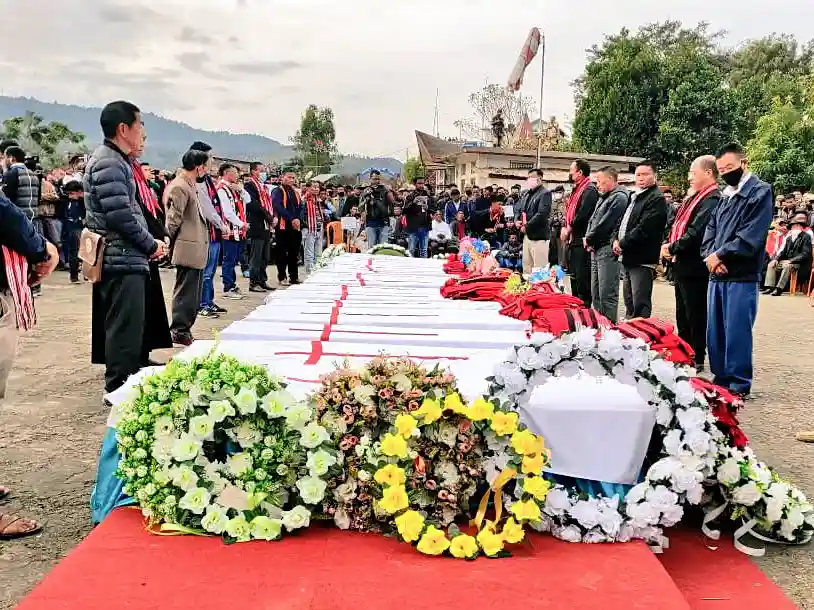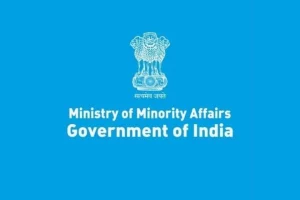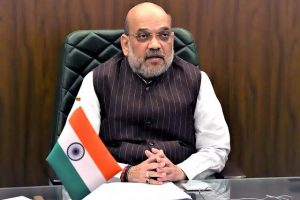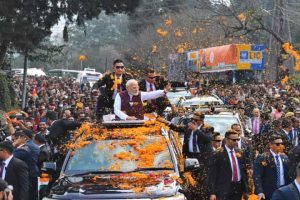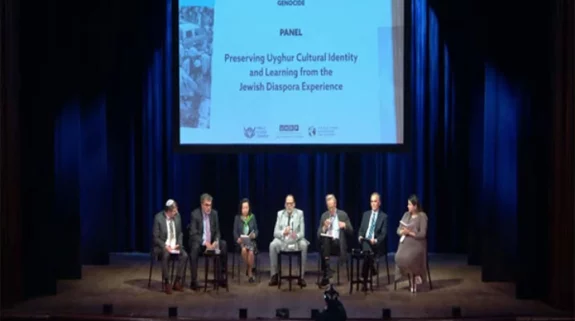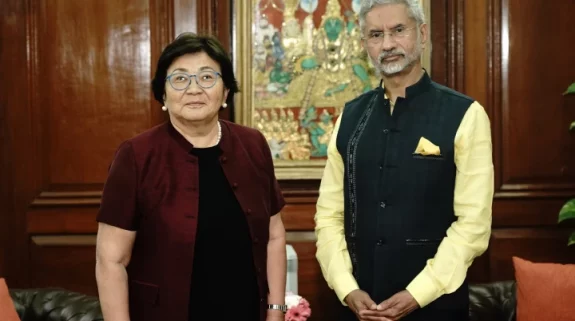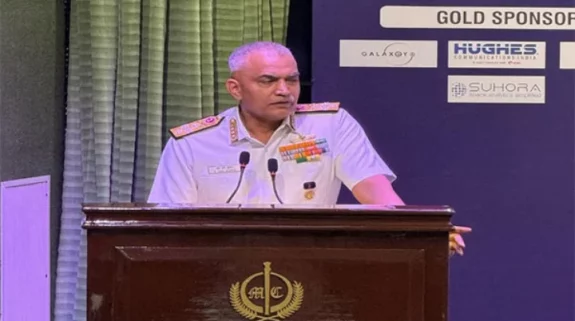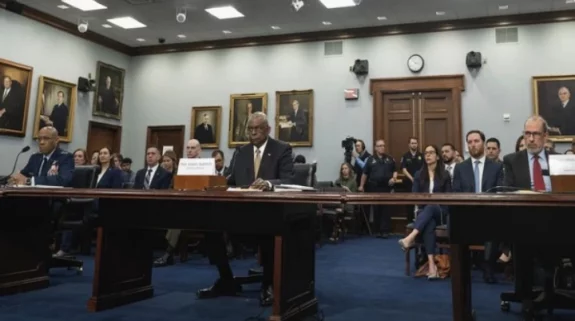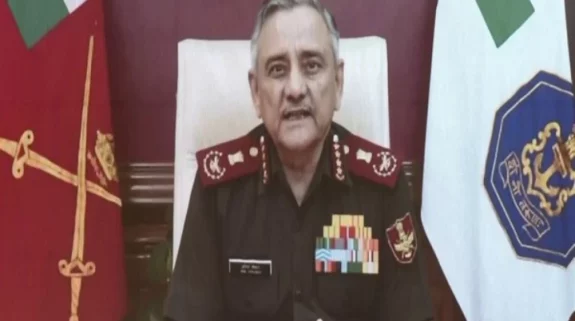The unfortunate incident in Nagaland on December 4 is again being used to stoke the fire, rather than support a united effort for stability and long-term resolution of the Naga issue, that dates back to India’s independence.
On December 4, the Army’s Special Forces, acting on specific intelligence, laid an ambush for insurgents. Six innocent people were killed when the ambush fired on a vehicle suspected to be ferrying the insurgents. The Army authorities were quick to acknowledge that it was a case of ‘mistaken identity’ and army personnel on the ground swiftly evacuated the two injured to a nearby hospital.
As the evening progressed, angry locals attacked the Army personnel. One soldier was killed and many more were injured. Two army vehicles were burnt. In order to disperse the mob, the Army personnel opened fire and consequently, seven people died in the firing.
Violence continued the following day, as the Company Operating Base of Assam Rifles in Mon town was attacked by an infuriated mob, compelling the forces to open fire to protect lives and property. One person was killed, and another injured in the firing.
On December 6, Union Home Minister Amit Shah unequivocally regretted the incident in Parliament and ordered an interagency SIT to carry out the investigations and submit its report within a month.
Additionally, a Court of Inquiry was ordered by the Indian Army. The inquiry team, led by a Major General, will examine the circumstances under which the incident happened, pinpoint responsibility; and recommend measures to prevent recurrence of such incidents.
While the events are still being investigated by the authorities, the fury and anger of the people is being stoked to demand revocation of the Armed Forces Special Powers Act (AFSPA). This tendency, however, is neither new nor surprising. After any unfortunate incident, deliberate attempts are made by vested interests to use AFSPA to deepen the sense of alienation by playing on sentiments of cultural and racial divide, and to even promote secessionism.
Paid my last respects to the innocent lives who were killed at Oting. Their sacrifices will not be forgotten. We are together in this. We stand in solidarity with the people. I extend my deepest condolences to the bereaved families. May the departed souls RIP. pic.twitter.com/R9K4Tk90fr
— Neiphiu Rio (@Neiphiu_Rio) December 6, 2021
‘Why do the Security Forces need AFSPA’, is the immediate and often asked question, bypassing the more fundamental understanding of what necessitated AFSPA in the given place. The Union Government declares an area to be a ‘disturbed area’ after considerable deliberation when over a period of time there is a significantly deteriorating law and order situation beyond the control of police. Distinction needs to be made between situations that merit areas to be declared disturbed vis-a-vis where Armed Forces are called out to aid civil authorities for undertaking Flag March, in situations such as riots. AFSPA is applied to counter insurgency situations where there is grave threat to the internal security of the country. Moreover, there is reason to believe that there is external support.
It is important to note that the ‘disturbed area’ label and AFSPA are not meant to be permanent. In India’s experience of counterinsurgency, the security forces have been successful in stabilising the situation militarily on repeated occasions. Logically, stability of the security situation should lead to political resolution of the conflict, revocation of the ‘disturbed area’ and AFSPA. But experience suggests that this may not always be the case.
We have witnessed instances of revocation following political resolutions in Punjab and Mizoram. In Tripura the revocation was done progressively as the situation started to improve in the jurisdiction of various Police Stations. By May 2015, the AFSPA was fully revoked from Tripura, with then Chief Minister Manik Sarkar stating: "The security forces recently exhaustively reviewed the law-and-order situation in the state. Considering the reports of the security forces, the council of ministers decided to recommend to the union home ministry to issue a notification to withdraw the AFSPA."
Likewise, with effect from 1 April 2018, AFSPA was revoked from Meghalaya in light of improved security situation. On the same day, AFSPA was withdrawn from eight police stations’ jurisdiction in Arunachal Pradesh while keeping it operational in the three districts bordering Myanmar- Tirap, Longding and Changlang.

In the case of Nagaland, unfortunately, peace has been elusive as the political process has been slow and sluggish. In August 1997, a ceasefire was declared with NSCN (IM) and a unilateral cease-fire by NSCN (Khaplang) faction also came into effect in April 2000. Meanwhile, there were multiple splits in both NSCN (IM) & (K), due to some cadres being against any ceasefire and peace negotiations.
In August 2015, a Framework Agreement was signed between the Government of India and NSCN (IM), and four years later, on 31 October 2019, another ceasefire agreement was signed by all NSCN factions to finalise the Naga Peace Accord. Lately, the Gaon Bura Association of Nagaland and other Naga National Political Groups (NNPGs) showed political resolve, and they are also being included, as the peace process progresses slowly, albeit more inclusively.
Concomitant to the political process, many initiatives are being taken by the Union Government to expedite economic and infrastructural development of the Northeast. Prime Minister Modi, in his Independence Day speech this year, said that “the work to connect the state capitals in the region with rail services will be completed soon”, the region would be further connected with Bangladesh, Myanmar and Southeast Asia. Northeast India is indeed the springboard for the Government’s Act East policy, thereby peace and stability is an imperative.

Connectivity projects undertaken by the Government to integrate the Northeast are affected by the disturbed security situation. Kidnappings, threat calls to site engineers, attacks, firing and kidnapping for ransom continue to stall progress of the 111-km Jiribam-Tupul-Imphal rail line. In August this year, two days before the inauguration of Northeast Frontier Railway (NFR)’s special tourist train, members of the Dimasa National Liberation Army (DNLA) rebel group put seven trucks on fire and killed five people. Similar security challenges stare at Nagaland’s infrastructure projects such as the 82-km Dimapur-Kohima railway line scheduled to be completed by 2023.
Construction work of the World's Tallest Railway Bridge Pier at Noney Valley in Manipur with a height of 141 Mtrs. is progressing swiftly.
As a part of the ambitious 111 Km long Jiribam-Imphal line, the travel time of 10-12 hours will be reduced to a mere 2.5 hours. pic.twitter.com/Jqdd9BbQcH
— Ministry of Railways (@RailMinIndia) November 29, 2021
Adding to the complexity is the fact that security threats cannot be traced to a single source, as they emanate from multiple factions of insurgent groups. Although the NSCN cadres in the ceasefire are located in designated camps, they continue to violate the ceasefire rules and move around freely, indulging in violence, extortion, and blockades. With little or no public reaction against the cadres, making a distinction between friend and foe becomes very difficult for the security forces.
China’s influence has been a further aggravating factor. China’s involvement in training Naga, Meitei, and Mizo rebel groups since the early sixties is well known. In July 2011, seven Meitei outfits of Manipur, with the support of NSCN(K), created a combined front called ‘Coordination Committee’, an approach advocated for long by China.
Confessions of surrendered militants reveal that terrorist groups in both Assam and Nagaland have received major arms consignments from China from time to time. Top NSCN (IM) Arms organiser, Anthony Shimray (now in custody) had confirmed that NSCN (IM) along with ULFA (anti talk faction) have “very close connections” with China. Yunnan in China has become known as the centre for arms procurement.

Map Courtesy: Google
The contention that AFSPA provides ‘sweeping powers’ to armed forces and provides ‘blanket protection’ from criminal prosecution is incorrect. There is provision for prosecution of security personnel, with the consent of the Central Government. Army has invariably ordered inquiries whenever the situation so required. Accountability is fixed and action taken against individuals for lapses once determined. Punishment awarded to the guilty in the Machhal case and the ongoing investigations in the Shopian case, amongst others, testify the same. Armed Forces fulfil constitutional responsibilities upholding the law of the land. The fact that Army personnel are additionally subject to the Army Act and Army Rules, imply that they are subjected to laws that are more stringent than the civilian citizen.
Another argument often cited by critics of AFSPA is that there are no rules for application of AFSPA. The Supreme Court of India, while upholding the Act, has issued guidelines on application of the Armed Forces Special Powers Act. Based on the Supreme Court guidelines, Standard Operating Procedures (SOPs) have been issued.
Indian Army had created the Human Rights Cell in March 1993, in fact before the Human Rights Commission was established in October 1993, under the aegis of Protection of Human Rights Act of 1993. The cell is meant to promote and protect human rights and is tasked with monitoring and responding to alleged Human Rights (HR) violations by Army personnel. Similar cells are also set up at the Command, Corps and Division/Force HQ level in Counter Insurgency areas.

Four NSCN (IM) rebels were arrested from the Merapani area along the Assam-Nagaland border and a huge cache of arms and ammunition was seized from their possession, in Golaghat in August (ANI Photo)
Unlike Armed Forces around the world operating in counter insurgency/counter terrorist operations, Indian Army follows the principle of ‘minimum essential force’. Heavy calibre weapons, artillery, armed/attack helicopters, armed UAVs, or fighter aircrafts are not used. Army’s operations are launched based on specific intelligence, and the cordon and search operations that were common in the early years of counter insurgency, have been done away with. This obviously entails increased security risk of security forces running into traps by intelligence sources that are often compromised.
Recently, on December 16, when the country was celebrating the Golden Jubilee of India’s spectacular victory over Pakistan, our security forces rescued two girls taken hostage by terrorists in Kulgam in South Kashmir and eliminated the terrorists. In situations like this, where insurgents/terrorists merge with the locals by seeking shelter amongst the populace, or use civilians as human shield, the Forces can’t be expected to deliver without the protection of AFSPA.
The situation in Nagaland is fragile. Internally there are conflicting political agendas to contend with. The porous borders with Myanmar enable easy movement of terrorists, drugs and arms smuggling. The influence of China cannot be wished away. Even slight instability can send the situation hurtling down an abyss. At this crucial juncture when the Nagaland Peace Process is in an advanced stage, we should not lower our guard by revoking AFSPA. Let the investigations conclude and the law take its course in dealing with the 4-5 December incident.
(Lt Gen Subrata Saha, Former Member NSAB, Former Deputy Chief of Army Staff and Colonel of the Assam Regiment that draws troops from all North-eastern states of India. He was the Corps Commander of Kashmir in 2014-15. In his nearly 40 years in the Army, he has served extensively in Jammu & Kashmir, Punjab, and the Northeast – areas that have been under jurisdiction of AFSPA)
Also Read: Nagaland Assembly urge Centre to repeal AFSPA to facilitate ongoing peace talks






